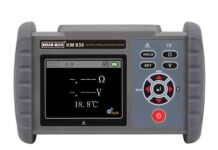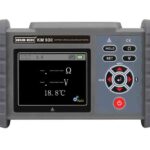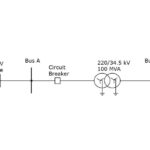
Maintaining the discipline of electric grid is essential for its secure, economic and stable operation. During the last decade in India, there is a noticeable surge in the installed capacity and it has grown to 369427.97 MW as on 29-02-2020. The increased capacity of grid further sets challenges of varying frequency, stability, mismatch in demand & supply, etc. The grid frequency of a power system network changes continuously and it can be controlled by minimizing the mismatch in demand and supply. When generation is more than the demand, the frequency of the grid rises while if the generation is less than the demand, the frequency falls. By either changing the demand or by changing generation the frequency of grid can be maintained at the constant level. The prior problem of the Indian power system was not only shortage of power; there was very big difficulty in grid operation caused by indiscipline in the prevailing system. As a solution to this problem, the Central Electricity Regulatory Commission issued a detailed order on 4th January, 2000 and for the first time introduced the term ‘Availability Based Tariff (ABT)’ into the Indian power sector. In the context of the Indian power sector, the literal concept that the term ‘Availability Based Tariff’ had introduced is Unscheduled Interchange (UI) i.e, the amount of deviation from the scheduled value. The introduction of the Electricity Act, 2003 brought many changes to power sector like open access in transmission, increased generation capacity, Independent Power Producer (IPP) etc. Our Indian Power System operates synchronously with five regional electricity regions named Eastern, Western, Southern, Northern, and North-Eastern regional load dispatch centres. Despite the commission’s detailed order dated 04.01.2000 many review petitions were received that caused the delay in the implementation of ABT in all the regions. Table 1 shows the date of implementation of ABT in respective regions, though there were some delays upon its implementation but it showed excellent improvement in grid discipline.
In this article, ABT’s implementation has been analyzed by analytical research upon various data sources published by CERC, NLDC, and regional load dispatch centres. This will also identify any foreboding regulation in order to kill the functionality of ABT from the tariff structure and all the major changes in permissible frequency range and rates are plotted. A section in this article describes an event when all the lights were switched off at 9:00 p.m. on 5th April, 2020 for 9 mins as a tribute to all the COVID-19 warriors. This study is organized as follows; Section II is the case study of Availability Based Tariff. Section III discusses various ABT related changes. Section IV discusses an example of discipline in the Indian power system.

Availability Based Tariff
- Intending to analyze the need of ABT, the past problems associated with grid are discussed as:
- Low frequency at peak load periods, with frequency falling to 48.0- 48.5 Hz for several hours per day.
- Grid frequency shows irrelevant rise during off peak hours and needless burning of fuel.
- Difficulty in operation of generators i.e, frequent tripping of generators.
The most commendable aspect of ABT is its approach of splitting the tariff calculation into three parts – (i) Capacity charge, linked to MWs capability of generating station (ii) Energy charge, variable costs like fuel cost etc. (iii) UI charges, cost for deviation from the schedule (can be incentive/disincentive)
Capacity Charge: The beneficiary has to bear this capacity charge in proportion to their scheduled allocation irrespective of their actual drawl. Also known by the term, ‘Fixed charge’ is related to the generating station’s availability and ‘Availability’ means the readiness of the generating station to deliver ex-bus output.
Energy Charge: This charge is calculated by the scheduled ex-bus energy per kWh rate that is supposed to be delivered by generating station. It should be noted explicitly that the energy charge (at the specified plant-specific rate) is not based on actual generation and plant production, but on scheduled generation. For an instance, a generating station injects 800MW power into the grid while it was scheduled to deliver 600MW then the generating station would be paid only for the pre-committed scheduled amount i.e, for 600MW and the tariff for the mismatch would be dealt according to the UI rates of the prevailing time.
Unscheduled Interchange: For synchronized operation of the Indian power system, the operators are supposed to maintain the frequency of Indian power grid at its nominal value of 50Hz. The mismatched amount in generation and demand is either incentivized or disincentivized by using UI charges. In this tariff scheme, the generating station is entitled to receive the incentive payment according to the frequency driven rate for the surplus amount of generation when the actual supplied energy is more than that of pre-committed scheduled value. Similarly, the stations are imposed with monetary fine if the actual supplied power is less than that of scheduled value. For calculation of UI charge, the energy is metered in 15 mins time block and this accounted energy value is then compared with the scheduled value for that 15 min block. After this, the corresponding UI rate is determined by using the average frequency of the grid during the same 15 min interval.


Availability Based Tariff: A Timeline Review
In year 2000, after accounting all the encountered problems in the grid the commission issued a detailed order for the compliance of ABT based tariff mechanism in the Indian power sector. Due to some misapprehending, soon after its order, the commission received many review petitions for this order but commission retorted every relevant petitioner who were stakeholders, generation companies etc. Table 2 shows the proposed UI rate to the corresponding average frequency and these rates are subject to change through a separate notification from time to time.
ABT in 2002-03 to 2005-06
Finally in the annual report of 2002-03 of CERC, the commission obsoleted the old tariff structure and the new tariff structure was regulated. After its successful implementation in all the regions, the ABT showed a remarkable improvement in the grid discipline and frequency profile. The implemented UI rates are discussed below:

For UI rate of 49.80 Hz to 49.82 Hz:
Total number of steps = (50.50-49.80)/0.02 (1)
= 35 steps of 0.02 Hz each
Now, the rate for this range is 6 paise/kWh rise for each 0.02 Hz step fall then,
UI rate = 35×6 = 210 paise (2)

For UI rate of 49.0 Hz to 49.02 Hz i.e. Ceiling rate:
Total number of steps = (49.80 – 49.0)/.02 (3)
= 40 steps of 0.02 Hz each
Now, the rate for this range is 9 paise/kWh rise for each 0.02 Hz step fall then,
For Ceiling rate = (40*9) + 210 = 570 paise (4)
While these UI rates were performing well, the commission kept on receiving petitions/suggestions to maintain the ceiling rate above the cost of diesel based generation.
ABT in 2006-07
In response to these suggestions, the CERC further amended the UI price vector in 2006-07 and increased the ceiling rate from 570 paise/kWh to 735 paise/kWh. The following table shows the new UI price vector to its corresponding average frequency w.e.f. the year 2006-07.
Table 4 shows the UI rate variance, corresponding to the average grid frequency. The implementation of ABT was continuously improving the frequency regime, meanwhile the commission again started receiving the petitions to reconsider the UI rates.
ABT in 2007-08
Finally, in the 2007-08, the commission further proclaimed it by enhancing the UI ceiling rate from745 paise/kWh to Rs 10 per kWh in its annual report. The new UI rates are given in Table 5.
This article will be continued in the next issue as Part 2

Aniket Raj
B-Tech third-year student of Madan Mohan Malaviya University of Technology,
Gorakhpur (U.P.) in Electrical Engineering.

Dr. Prabhakar Tiwari
Associate Professor, Department of Electrical Engineering,
Madan Mohan Malaviya University of Technology.

Prof. S.N. Singh
Vice-Chancellor,
Madan Mohan Malviya University of Technology, Gorakhpur.



















Well-Written